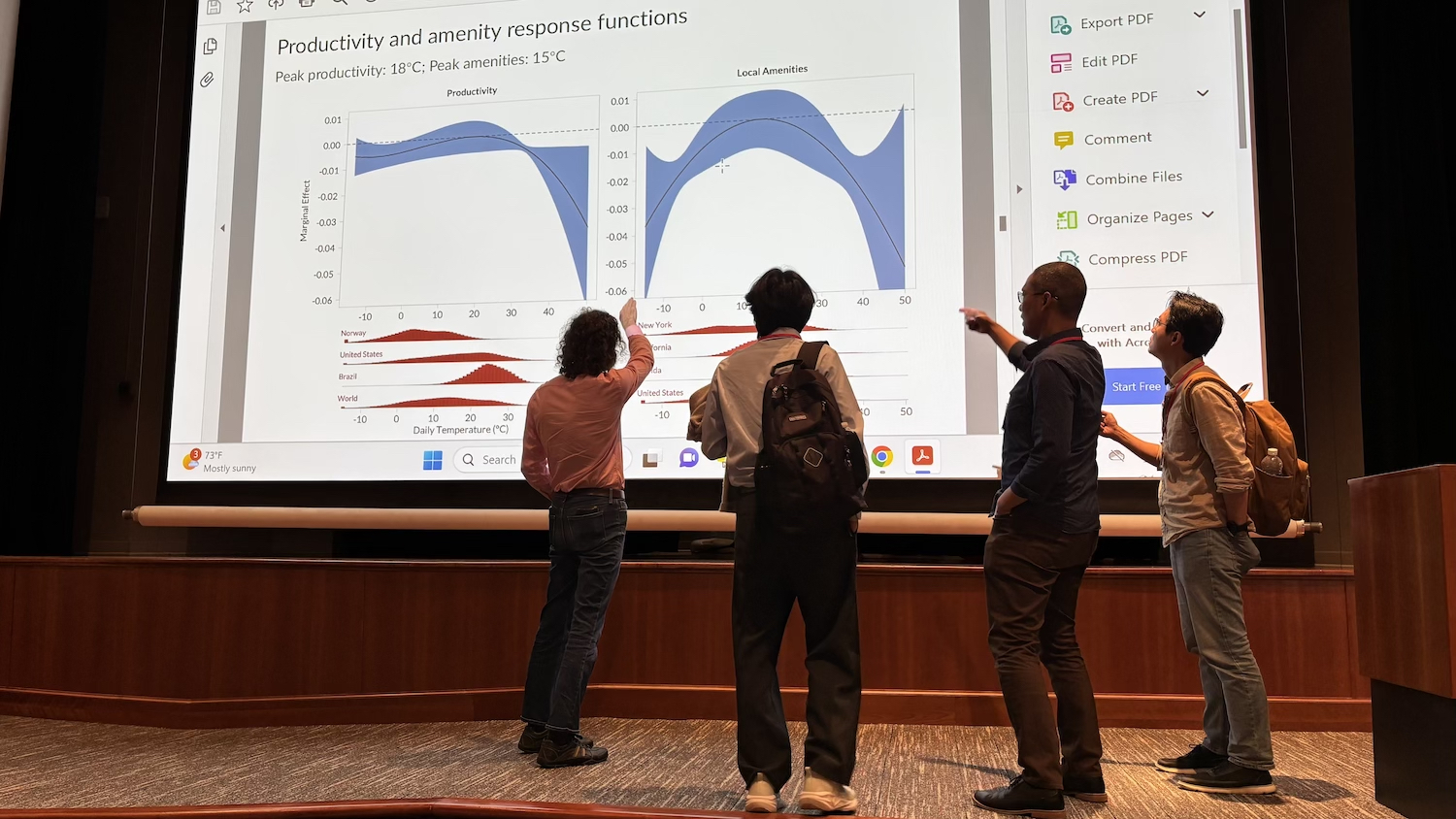The Challenges of Unwinding a Trade War
As presidential candidates spar over tariffs, the global move toward protectionism gains momentum.

One of the sharpest disagreements between former President Donald Trump and Vice President Kamala Harris has been over the tariffs Trump levied on goods imported from China in 2018.
Trump claims that the tariffs have generated billions of dollars in revenue from the Chinese government. He’s proposed increasing existing tariffs and imposing new ones. Harris characterizes that expanded tariff proposal as “a sales tax on the American people.” While the evidence suggests that American consumers and firms bore the costs of the Trump tariffs, the biggest cost may be the long-term disruption of the global trading system.
The truth is that, however much they may differ on who’s paid for the tariffs or whether they should grow, there’s little the next president can do to roll back the wave of protectionism that Trump’s Section 301 tariffs set off. Protectionist sentiments have gained a foothold now. The benefits of protection are concentrated, the costs diffuse, and special interests have much to lose by returning to free trade.
While it will likely be decades before we can say with confidence how those tariffs affected specific industries and communities in the United States, their effect on economic integration is clear.
The long march to free trade
First, some background on the history of tariffs. Tariffs are taxes imposed on foreign goods, and today they exist primarily to protect domestic industries by discouraging purchases from their overseas competitors.
Through the early 20th century, they were the defining feature of the global economy. Until the 1913 Underwood Simmons Act (which also instituted the federal income tax) they were also an important source of government revenue. This act dramatically lowered US tariffs—a decline that would continue through the end of World War I, when post-war protectionism led to waves of tariff hikes in 1921, 1922, and 1930.
That last set of tariffs, the product of the Smoot-Hawley Act, was the largest in U.S. history, and it set off retaliatory tariffs that helped exacerbate the Great Depression. That reality, along with post-World War II interest in greater economic integration among European countries, started the long march toward free trade in the late 1940s.
In eight rounds of General Agreement on Trade and Tariff (GATT) negotiations between 1947 and 1994, groups of nations came to make bilateral agreements lowering tariffs on one another, often over long periods of time. The first GATT talks in 1947 brought together 23 countries. The last, from 1986 to 1994, engaged 123 countries and resulted in the creation of the World Trade Organization (WTO).
These were very slow, time-intensive, negotiation-heavy processes. Tariff reductions occurred over generations, with each round spanning decades. For example, cuts negotiated during the Tokyo GATT talks in the 1970s ’ weren’t fully implemented until 1987. That long lag cushioned the blow to domestic producers by giving industries that had benefitted from protectionism time to shift.
Nonetheless, negotiators were always aware of the risk of domestic interests derailing negotiations in favor of specialized tariff protection. So much so that they even used special formulae to calculate tariff cuts so they could avoid the temptation of manipulating negotiations in their own country’s best interest. Over the decades, GATT members worked together to obtain the mutual gains of free trade and avoided succumbing to the temptation of short-term benefits (and lobbying pressures) associated with protectionist interests.
Even as the GATT rounds wound down, regional free-trade agreements sped globalization along. The North American Free Trade Agreement (NAFTA), the Association of Southeast Asian Nations Free Trade Area, Mercosur and other multilateral pacts of the 1990s and 2000s—as well as the earlier creation of the European Union—finished the work that began decades earlier.
By 2016, free trade was the rule. While countries still maintained tariffs for national security or to protect vital domestic sectors, the barriers to trade between nations had largely been lowered. In 1900, consumers would have been paying a nearly 30-percent tax on imports, by 2016 this was down to 1.5 percent.
Then came the Trump tariffs.
Protectionism returns
In 2018 and 2019, the Trump administration levied tariffs on thousands of Chinese imports, ranging from medical devices and televisions to electric vehicles and aircraft components.
One effect is very clear: The tariffs set off a trade war that rolled back decades of progress toward globalization. Almost immediately, China and other trading partners caught in the crossfire issued their own retaliatory tariffs on American agriculture products, aluminum and even bourbon.
With each new tariff, the demands for maintaining and even expanding tariffs built. There was international momentum, as countries stung by new duties responded in kind. But domestic pressures have built, too. Companies that reconfigured their supply chains to absorb the initial rounds were reluctant to do it again. And organizations in the protected sectors have lobbied to keep that protection. In 2024, the Joe Biden administration kept most of the Trump tariffs and even increased the ones on Chinese electric vehicles, solar panels and electric vehicle batteries—despite limited evidence about the efficacy of tariffs on these goods.
While former President Trump continues to claim that foreign governments will pay for these and planned future tariff hikes, the data says differently. Indeed, American consumers make up the one group that was clearly hurt by the tariffs.
A February 2020 study in the Quarterly Journal of Economics found that importers largely passed the entire cost of the tariff on to their customers. That cost—maybe 3 percent of what a given American household spends in a year—is distributed broadly enough that the people who bear it may not be aware, especially in light of high inflation over the last three years. While these costs have hit across all income brackets, the US tariff code is notoriously regressive, making it more likely that the biggest costs have fallen on those with less means and less political power to fight back.
Beyond that price burden, our understanding of the 2018 tariffs’ effects is limited, but so far it suggests that employment effects of the tariffs are at best complicated. While tariff increases may have directly protected some jobs, the effects on firm’s costs throughout their supply chains seem to have cost more jobs than they saved. Modern firms depend on global supply chains, and rising tariffs (in steel for example) can cause firms who use steel to scale back on production—and employment.
But the long-term effects are still unknown. Only in the last decade or so have we had the data, models and computational tools to understand the real economic effects of tariff changes with China in the 1980s, China’s subsequent rapid growth, or even more modest policy changes like NAFTA in the 1990s. It will be years before we get a sense of the full cost of these policy shifts.
It took nearly 80 years for free trade to become the status quo and less than six years for protectionism to re-emerge. Reversing course now would be very painful politically. Too many powerful actors—from the foreign and American politicians who can win votes by claiming the tariffs saved jobs to industry interests thriving in this new normal—have too much to lose.
Unwinding this trade war will be a long, drawnout process and there are limits on what politicians can feasibly walk back. But the process will be longer and more painful if we allow tensions and tariffs to rise even further.
Andrew Greenland is an assistant professor of economics in the Poole College of Management and an assistant professor of economics in the Department of Agriculture and Resource Economics in the College of Agriculture and Life Sciences. He studies U.S. trade policy and the effects of globalization on the U.S. throughout its history.



